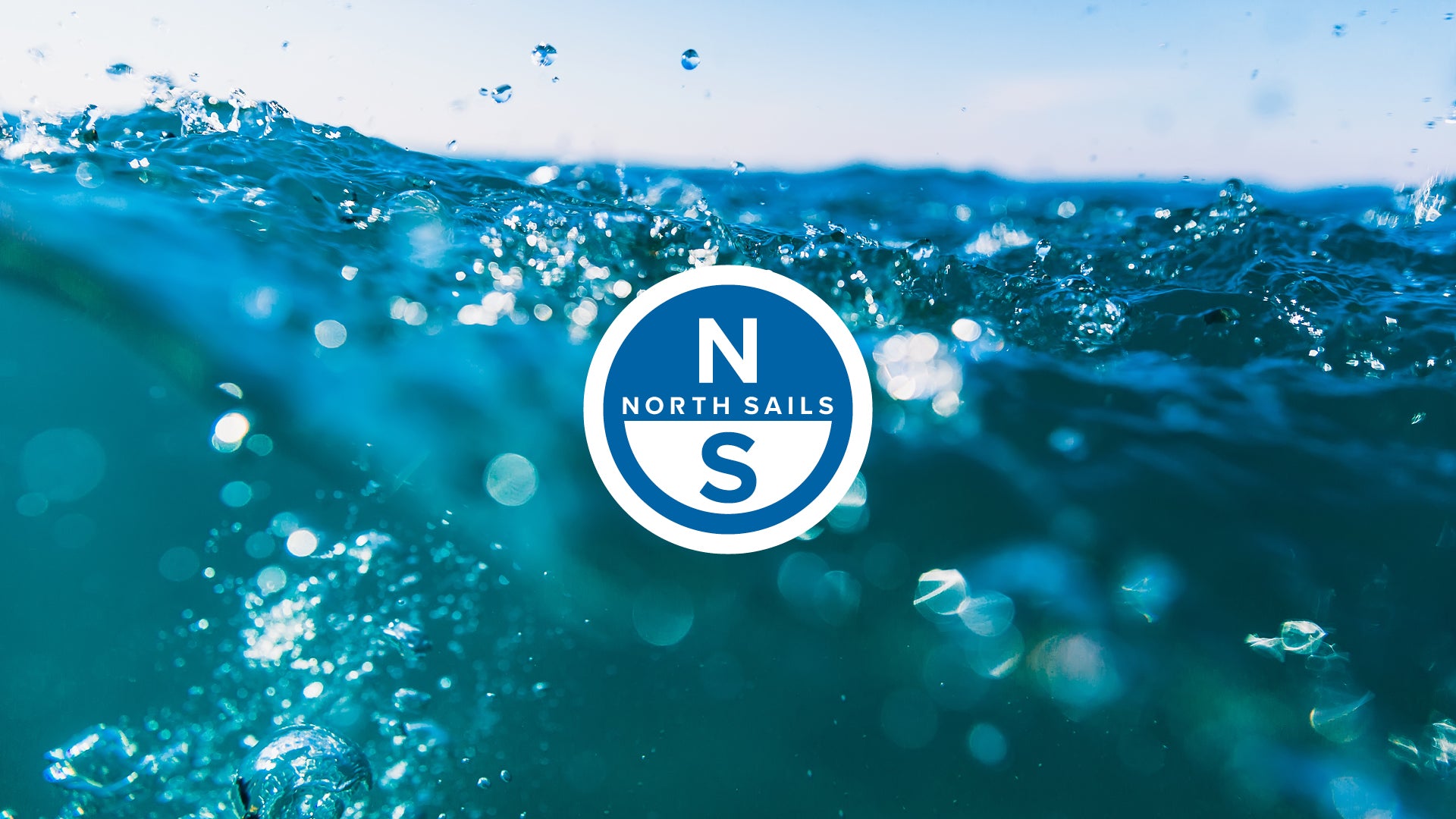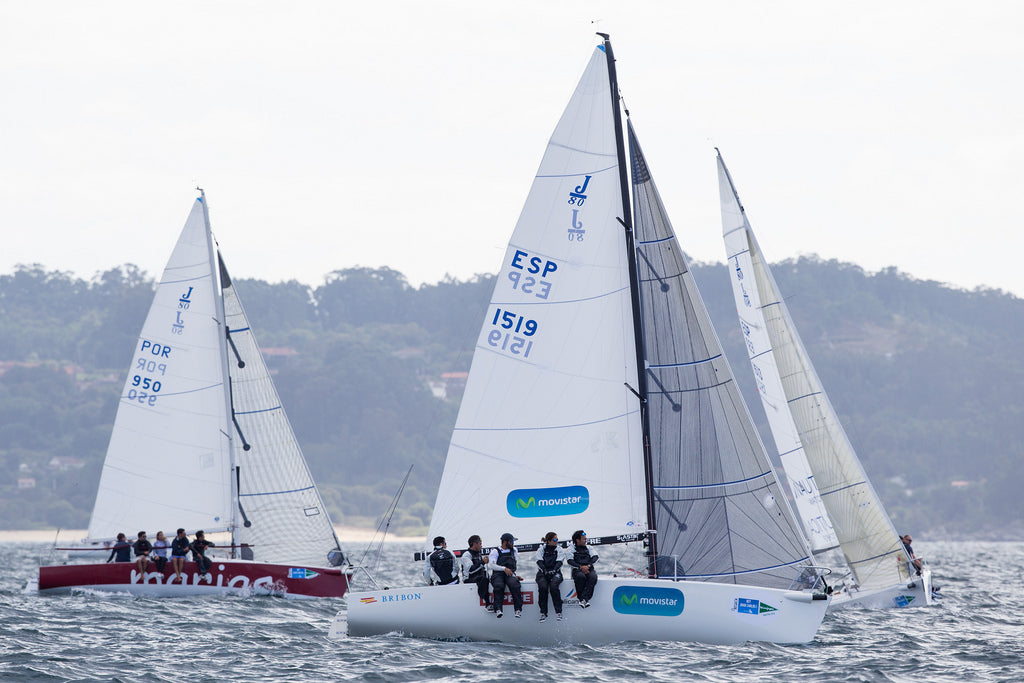NORTH SAILS BLOG
Todo
Events
Guides
News
People
Podcast
Sustainability
Tech & Innovation
Travel & Adventure

J/80 TUNING GUIDE
North Sails has been sailing J/80s since they were first introduced. Our commitment to the class and to its sailors sets us apart from any other company in the sailing industry. Welcome to the North Sails Program, the relationship we are about to build is of utmost importance to us. We look forward to working with you.
The measurements and the settings included in this book are one that we have found to be the fastest the J/80 designs available from North. Since crew, wind and sailing conditions vary, you may find slightly different settings are better for you.
BOAT PREPARATION
MAST RAKE
Mast rake is very critical in getting the best all around performance from your J/80. Because of differences in the measurement from the black band to the main sail halyard sheave box, combined with slight differences in the total length of the spars, we have determined that rake must be measured at base rig shroud tension, also making sure the backstay is fully eased. Adjust the back stay turn buckles so that blocks are hanging approximately 12” below the top of the bridal.
STEP-BY-STEP:
Set your mast but so the aft side of the mast step is 7.75” from the bulkhead. This is only a mast step starting point and most likely will have to be adjusted later in this rig set up procedure.
Attach tape measure to main halyard and raise to top of mast.
Measure down to top of black band at boom goose neck and adjust halyard so tape measure reads 30’ at that point and cleat. Again, this measurement needs to be exactly 30’ to top of black band at the goose neck.
Swing the tape measure out to the stern and rap the tape around the stern next to the tiller. Measure to the center of the tiller cut on the very aft part of the boat hull. Where the tape measure first hits fiberglass at the aft center of the tiller cut out should read 37’ 2 3/4”.
Remember that every time you move your mast but location to achieve your correct 3.5”to 3.75” of prebend your rake number and shroud tension will change. It will take some going back and forth to achieve perfect prebend and rake together, but the payoff can be big gains up the beat.
FINAL MAST BUTT POSITION & PREBEND SETTING
Once your headstay is set for the correct mast rake it is now time to adjust your mast but position for the 3.5” to 3.75“ pre bend which best suites your J/80 main sail for a wide range of conditions. We have found that its best to aim for the 3.75” prebend number in flat water venues and the 3.5” prebend number in windier , choppier venues. We have also found that moving your mast but forward .5” from your standard spot in winds over 20 knots can be very fast , especially in big wave conditions when a eased main sheet ,bow down mode is required to go fast upwind. Moving the mast but forward in big breeze also allows you to sail with more headstay tension for a given amount of back stay and shroud tension which in tern helps transform the jib into more of a flatter draft forward heavy air shape.
Make sure your spar is in the standard factory position, well chocked side to side and for and aft so the spar can’t move at the deck.
Position the aft side of the mast step 7 3/4” from the bulkhead but remember that this is only a starting point and you will most likely have to adjust from there to acquire your desired prebend. Due to inconsistencies in bulkhead placement and mast placement at the deck, there is no way to give you the exact placement from the bulkhead for you to achieve your exact desired prebend.
To check to see if the 7 3/4” position is giving you the correct pre-bend:
Attach the main halyard to the goose neck as close to the back of the spar as possible and tension the halyard hard.
Hoist someone with a tape measure up the mast on the jib halyard and have them stand on the bottom spreader , taking there weight off the halyard. Another way to measure brebend is to put a ladder up on the front of the mast and have some one climb up to the the first spreader and measure maximum prebend from the ladder.
While some one is standing on the deck ,pushing the main halyard against the back of the mast just above the goose neck, have the person up the mast measure the maximum distance from the back of the spar to the closest part or forward edge of the main halyard. Again, the maximum distance or prebend should be a couple of feet above the bottom spreader. Have the person up the mast move the tape measure up and down in that area to determine max pre-bend.
This pre-bend measurement should be between 3.5” and 3.75”.If your pre-bend is less, then move your mast back to increase pre-bend and if your pre-bend is more, then move your butt forward to reduce pre-bend.
Pre-bend is very critical in allowing your mainsail to react correctly with back stay adjustments along with the correct slot between luff of the main and the leech of the jib.
TAKE THE TIME TO ADJUST YOUR MAST BUTT FOR THE REQUIRED 3.5” to 3.75” PREBEND FOR MAXIMUM PERFORMANCE WITH YOUR NORTH SAILS!
Once your mast but is in the correct position, scribe a permanent line on the beam that the butt sits on so you will never have to go through this process again.
CENTERING THE SPAR
Measure back from the stem fitting 9’ 7” to each rail and mark with permanent marker.
Attach a tape measure to the jib halyard and raise a couple of feet.
Measure to each side and adjust the uppers so the measurement is the same on both sides.
SHROUD TENSIONS
Once the mast is centered, tighten the uppers so that they read 28 on your Loose tension gauge.
Tighten the intermediates so they read 12 on the Loose gauge.
Sight the rig by looking up the mast track and adjust the intermediates in 1/4” increments so the rig is straight. If you tighten one side a 1/4 turn,ease the other side a 1/4 turn, to insure you keep the same approximate tension on each intermediate.
Tighten the lowers to 5 on the Loose gauge.
Again, repeat step 3 until the spar is straight side to side.
NOTE: If you find that it requires much more lower or intermediate tension on one side than the other to keep the spar in column, then the mast may need to be re chalked from side to side at the deck. If not corrected, you will be sailing with different head-stay sag from tack to tack, which will make it impossible to duplicate jib lead position and jib sheet tensions from tack to tack.image
Your rig is now tuned for base setting 6-10 knots. We recommend leaving dock at base setting and adjusting from that point up and down for different wind strengths. We also advise that you buy some measuring calipers and measure your turn buckle distance at base so you can always get back to base setting on the water.
NOTE: Remember to adjust your backstay turnbuckles with your shroud turnbuckles. As your shrouds are tightened , your backstay will become to loose and won’t have the throw you need to tension properly if the turnbuckles aren’t adjusted with the shrouds. This also is true when easing your shroud tension.
When easing your shrouds for lighter conditions , remember to also ease your backstay turnbuckles to achieve proper headstay sag.
TIP#1
Learning to fine tune your intermediates and lowers by sighting your rig sailing upwind can pay big dividends on the beat. Always follow the tuning guide for upper adjustment, but learn to adjust your lowers and intermediates to always keep your mast perfectly in column while sailing to windward. We have found that the J 80 sails faster upwind , under 10 knots with a 1/2” to 3/4” of smooth leeward mast sag. The tuning matrix numbers will get you close to the correct side to side mast sag, but sighting up the rigs mast track while sails are trimmed correctly and weight placement is correct will tell you if small adjustments are needed for perfect tune.
TIP#2
Quick rig tune check is to make sure your lowers and intermediates are snug on the leeward side when sailing over ten knots. As the breeze increases to over 15 knots, your lowers and intermediates should be tighter than snug.
This quick check can’t be used with the uppers on a J80 because the shroud bases are very close together. The uppers on the leeward side should always be much tighter than snug to assure your spar is in column at the hounds.
The information put forth in this updated tuning guide is a combination of rig settings developed by multiple North American and World Champion Max Skelley, combined with information learned and tested in extensive two boat sail testing.
J/80 TUNING MATRIX
Using the Loos Gauge B
WIND SPEED
0-5 knots
6-10 knots
11-15 knots
16-20 knots
20+ knots
UPPERS
27
28
30
32
34
LOWERS
Slack
5
15
22
26
INTERMEDIATES
5
12
15
22
24
NOTE:The thread size of your turnbuckles will determine the amount of turns it will take to get from one setting to another. We recommend making a chart with the amount of turns so that you can change settings easily on the water between races.
SAIL CARE
Always store your sails away from the sun and make sure they are clean and completely dry.
Be sure that you always “roll “your upwind sails. This will help then last longer and remain wrinkle free.
READ MORE
READ MORE

J/80 PRODUCT RANGE 2017
J/80 PRODUCT RANGE FOR 2017
Spanish Cup 2016 – Winners Bribon/Movistar racing with the new BTY-15 Jib
The 2017 range of products for the J/80 are now ready. Check out all the details below. Our Class Experts are ready and waiting to advise if you need information or have any questions, so please do not hesitate to contact them.
J/80 MAXM1 All-Purpose Mainsail
The MAXM1 World Championship winning design by Max Skelley is manufactured with a crosscut panel layout using Dimension 260B HTP Dacron. The crosscut layout provides for a forgiving, user-friendly and easy to trim mainsail.
J/80 T-6R All-Purpose Mainsail
The World Championship winning T-6R Mainsail uses a full radial panel layout, which allows the sail to cope with the loads running through it when sailing. This gives a smoother sail, which holds its shape longer than a more conventional cross cut sail. The T-6R is made from North Sails’ own Radian 6.3oz Dacron. This is the world’s first high performance warp oriented Dacron.
J/80 BTY-12-3DL All-Purpose 3DL Jib
The BTY-12-3DL All Purpose thermo moulded sail offers a stronger more durable sail with excellent performance and longevity. The BTY-23DL has proved to be an outstanding all round sail around the globe.
J/80 BTY-15 All-Purpose Panelled Jib
New for 2017 the BTY-15 All Purpose full radial jib has seen an instant success winning its first regattas straight out of the blocks. The sail is manufactured from North Sails’ NLXI14 Aramid, which offers a quick and easy to trim sail throughout all conditions.
J/80 MR-5 Spinnaker
World and multiple national winning design, the MR-5 is an all purpose sail giving excellent all round performance. It is manufactured using 0.6oz Superkote 60 spinnaker fabric from Contender and comes standard in red, white or blue.
READ MORE
READ MORE